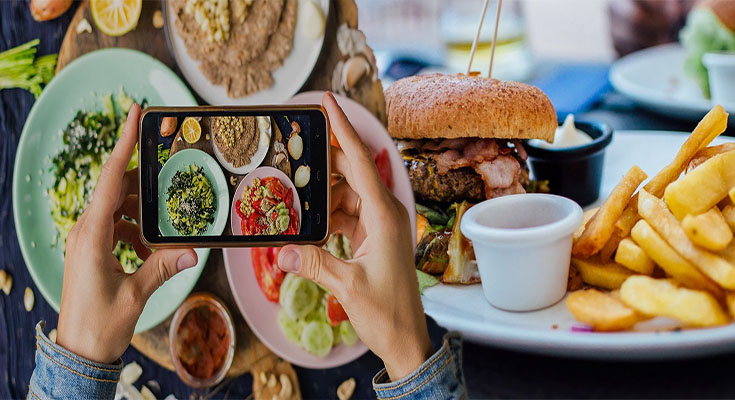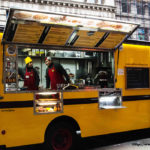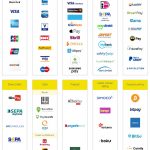Food and beverage marketing plan is a written document that translates ongoing market research into action plans and strategies. The process includes selecting target markets and marketing objectives, developing action plans, evaluating marketing plans, and monitoring and evaluating action plans. It involves a combination of positioning and advertising tactics. Some companies engage in product licensing, which allows them to sell another owner’s product in their own brand. Other companies use pro formas to project future sales and profits.
Sports sponsorships
Although children’s television viewing patterns are not explicitly targeted by sports programming, the sponsorships during these programs do expose young viewers to unhealthy products. The study was conducted with the use of Nielsen ratings and questioned whether or not children under 12 are exposed to the sponsorship commercials. The authors concluded that children were likely to be influenced by the ads. More research is needed to determine the impact of sports sponsorships on children’s eating habits.
Whether the relationship is beneficial for the sporting body and the sponsors is difficult to determine. Sponsorships can benefit both the sponsor brand and the fan-consumer, but there are risks to aligning with unhealthy brands. Thus, more research is needed to evaluate the benefits of such sponsorships. It is important to note that the impact of the sponsorships on children’s behaviour, attitudes should be assessed. To date, there are few studies that quantify the impact of such sponsorships on kids.
Athletes as powerful marketing tools
In the food and beverage industry, athlete endorsements are a common strategy for promoting products. Athletes often have positive associations with nutrition and physical activity, but their endorsements can convey contradictory messages. For instance, food companies often use sports celebrities to promote products that are nutritionally unsound. Some of these products may even promote the wrong kinds of diets, which is contrary to the athlete’s intentions.
In order to tap into fan excitement, companies may use athletes to launch contests. The hype generated by contests can motivate fans to buy products by making them feel like winners. Even non-athletic fans can become motivated to buy products. Food and beverage companies can also use athletes as effective marketing tools by engaging in contests. A great example of such a contest is Taco Bell’s campaign, which cost $750,000 to launch and generated more than 224 million views in one day.
Video game product placement
In a YouGov poll, nearly 50% of global consumers believe that video game product placement is an effective form of brand promotion. The brands that received the most votes were those in the automotive and electronics sectors, travel products, financial services, and food stuffs.
Consumers in Poland and India also rated video game product placement as effective. But, is it effective for brand promotion? Let’s examine this claim in more detail.
As with advertising in the real world, video game product placement is not a new concept. Video games often feature ads for branded products, such as the Mercedes-Benz SUV. The Tony Hawk’s Pro Skater series showcases real-world skating brands, without the hassle of annoying players with background ads. In general, however, well-integrated product placement does not interrupt the game’s narrative, and has become a prominent form of advertising in today’s media.
Coupons
Coupons are financial incentives for consumers to purchase a product or service. The most common types of coupons are those issued by manufacturers and retailers of consumer packaged goods. They are widely distributed through direct mail, coupon envelopes, social media, newspapers, and email newsletters. Some forms of digital coupons can be distributed through mobile devices. A well-run campaign can increase customer loyalty, increase revenues, and reduce marketing costs. But coupons are not without their challenges.
For example, fast food chains are notorious for bombarding consumers with offers. They target the same neighborhood with different offers, each designed to incite consumers to visit their restaurants. One method they use is to print coupons for different items, such as appetizers or specialty drinks. Consumers can also redeem the coupons at different times of day, thus boosting sales. Another type of food and beverage company uses coupons to increase sales and improve customer satisfaction.
Promotional offers
If you are running a food and beverage business, you should make use of promotional offers to attract more customers. There are many ways to promote your business, including creating a dedicated Facebook page, hosting food festivals, and interacting with members of your niche group. Food and beverage businesses should also consider hosting special events and occasional festivals to increase brand awareness. In addition to hosting special events, food and beverage businesses should also make use of pictures. Images of food and beverage products can tell the world about the quality of what you have to offer.
When developing promotions, take into account the profit potential of the product. Promotions that cost less can be more profitable. For example, a restaurant offering a free meal to students or teachers could offer them a discount for eating there. Students and teachers are likely to spend less than those with higher incomes, so a promotion that gives them value for their money is a great way to boost restaurant sales. The type of promotion used can vary depending on the product or service, but generally, these methods are effective and can boost your sales.
Social media
The importance of social media marketing for food and beverage brands cannot be overstated. With the explosion of social media, consumers are increasingly becoming food critics and bad experiences can ruin a business. In order to keep ahead of competition, food and beverage companies need to employ innovative and strategic marketing strategies. Here are some examples of how they can do it. Using celebrity partnerships to gain recognition and popularity. Creating an interesting and memorable photo for the social media page of a brand can help increase the product’s popularity.
During the COVID-19 pandemic, food and beverage brands used social media to position themselves as caring and contributing to society. In this way, they were able to quickly share advertising content and engage a large audience. In addition, the theme of COVID-19-related posts was “community support” or “brand isolation.” In this way, a brand’s message was “consume to cope.”










